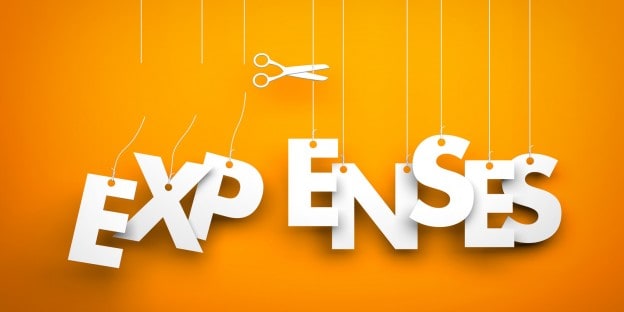
We all want to save money, whether it’s for emergencies, retirement, or other major goals. And that’s why it’s crucial to keep our living costs as low as possible — because the less we spend, the more money we have available to set aside for different purposes. Here are a few expenses it pays to look at slashing, especially if your savings aren’t where you’d like them to be.
1. Housing
Housing is the typical U.S. adult’s greatest monthly expense, but when it eats up more than 30% of your take-home pay, it means you’re spending too much. If you’re a renter, you shouldn’t spend more than 30% of your earnings on rent and insurance. If you’re a homeowner, that 30% figure should include your mortgage payment, insurance, and property taxes.
Even if you’re already at or below that 30%, it never hurts to cut back on this major expense category and free up room in the rest of your budget, so if you’re sitting on a larger property that’s costly to maintain, look at downsizing to a smaller space. Similarly, if relocating to a less trendy neighborhood saves you hundreds of dollars each month, it’s a move worth considering.
2. Transportation
It costs the average person $8,700 a year to own a car, according to AAA, so if yours is a luxury more so than a necessity, it’s time to consider unloading it in favor of public transportation. Not only is owning a car typically more expensive than taking the bus or train around town, but it’s also a perpetual liability. You never know when your engine might fail or other components might wear, so by getting rid of a car you can technically do without, you’ll be lowering your chances of having to deal with an unplanned expense.
3. Food
We all need to eat, but that doesn’t mean we can’t prepare food in our own kitchens. Restaurants and food establishments typically charge a 300% markup on the food they serve so that if you normally spend $200 a month on takeout, you can make similar items for just $50 yourself. Cut back on food spending every month, and you’ll be sitting on a rather sizable chunk of savings over the course of a year.
4. Healthcare
Countless Americans struggle to keep up with their healthcare expenses, so much so that medical debt is actually the No. 1 source of personal bankruptcy filings in the country. But if you make an effort to lower your medical costs, you’ll be better positioned to ramp up your savings.
You can start by shopping around for a better insurance plan if you currently pay for one yourself. Adding to your premium costs might actually save you money on other out-of-pocket expenses, like copays and deductibles. You can also take steps to lower your prescription costs by buying medications in bulk and requesting generics, which are notably cheaper than brand-name drugs. Finally, open a flexible spending account if your employer offers one, which will allow you to pay for medical expenses with pre-tax dollars.
5. Taxes
Taxes are an expense we all have to deal with, but you can take steps to lower yours and pocket some savings in the process. One of the easiest ways to reduce your tax bill is to put money into an IRA or 401(k) through your employer. With the former, you can contribute up to $5,500 annually if you’re under 50 or $6,500 if you’re 50 or older. With the latter, you’re allowed an annual contribution of $18,500 if you’re younger than 50 or $24,500 if you’re 50 or above. Either way, your actual savings will be a function of your effective tax rate, but if that rate is 25% and you put $5,000 into one of these two accounts, you’ll save $1,250, just like that.
Of course, this is just one tactic for reducing your taxes. Others include holding investments for at least a year and a day before selling them at a gain to avoid on a higher tax rate on your profits, donating unwanted goods to charity to get a tax write-off, and signing up for commuter benefits through your employer, which let you use pre-tax dollars to pay for expenses like transit passes and parking.
We all want to save money, and cutting major expenses will help you achieve that goal. So take a look at your budget, figure out where most of your money is going, and find ways to cut back. You’ll be thankful for it when you’re sitting on a pile of cash you didn’t have before.